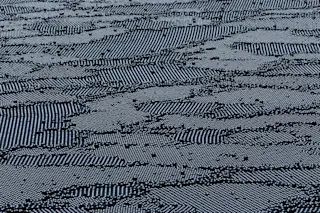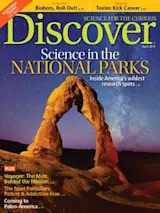When city officials placed shade balls in the Los Angeles Reservoir last summer to reduce evaporation and stop sunlight from triggering chemical reactions, onlookers noticed the balls arranging into strangely intricate patterns.
Why? Look to chemistry for the answer: The 96 million balls mimic the behavior of atoms. The 4-inch balls are restricted to a two-dimensional plane, so they tend to organize into efficient hexagonal grids, much like the atoms in crystals. Each grid reflects sunlight slightly differently, and lower water levels result in double stacking, leading to the reservoir’s patchwork look.
[This article originally appeared in print as "Throwing Shade."]















